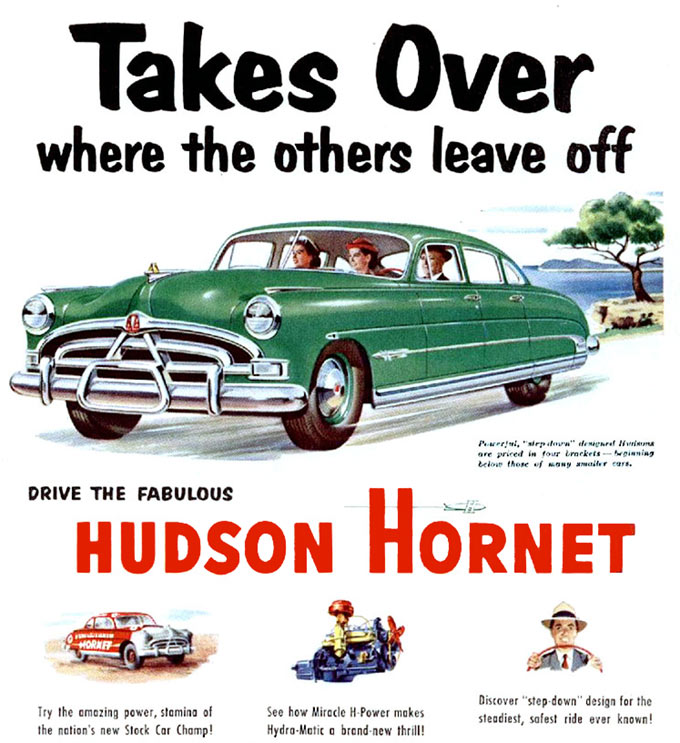One of the less-likely NASCAR champions was a full-sized L-head straight-six car from a premium brand, brought out in the same year as the first, 180-bhp Chrysler Hemi. The Fabulous Hudson Hornet may not have had a V8, but it had three other things going for it: lighter weight, a stiff unibody, and a sunken floor and engine which gave it phenomenal handling when compared to most American stock cars of the day. The straight-six was nearly as big as the first Hemi—308 cubic inches (while that first Hemi was 331 cid)—but was hooked up to a manual transmission and had less weight to push around.

As time went on, Hudson added twin carburetors to the Hornet’s options list, adding ten horses, and created a special blueprinted engine for stock-car racing. That kept it a champion in 1952 and 1953, but in 1954 its record faltered as GM, Ford, and Chrysler all launched bigger, better V8s in lighter cars.

The Hudson Hornet was an advanced car with a high state of interior trim; had it come out as a Chrysler, Mercury, or Buick, it would likely have done quite well and continued for many years. However, Hudson had just a single carline, in two wheelbases, and chose to go downmarket in the midst of a price war that devastated the “independents.” In desperation they merged with Nash, and the clever, innovative Hornet became a restyled Nash. The Hudson Hornet’s racing days, and for that matter its high sales days, were over—though the name would be resurrected twice by AMC and, now, by Dodge.
For the full story and many more photos, see Motales’ Hudson Hornet writeup